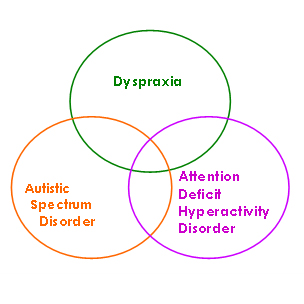Sensory Attachment Intervention
Combines sensory integration theory with attachment theories.
Attachment – frequently intergenerational i.e. we parent how we were parented
Attachment styles:
A – also known as avoidant
B – balance of cognition and affect
C – also known as ambivalent
A&C – also known as disorganised
Secure attachment (B) – infant expresses need (thru crying – increased arousal), need is met appropriately in a timely manner – arousal / anxiety reduces
A – parents display anger, reject or are dismissive when child expresses needs inhibit their emotion. Core fear is true intimacy. Parasympathetic Nervous System bias
C – unpredictable response or only respond to high arousal – core anxiety is fear of separation / abandonment. Sympathetic Nervous System bias
Sensory Attachment Response to Self Regulation
1. Autonomic Functioning – psychobiological e.g. heart rate, sleep/wake cycle, digestion, muscle tone. Nurture – womb and maternal space.
2. Sensory-emotional modulation – ability to modulate arousal whilst engaged in activity i.e. hypo / hyper response to sensation & emotion, attention, hyperactivity. Balance of nurture & challenge.
3. Sensory-emotional discrimination – self care, play, academic. Diff with interpreting non-verbal cues – probs with social skills, empathy. Enhance – end products of praxis etc. Father space & independent space.
4. Executive functions (cognitive) – memory, attention, motivation, organisation. Deficits: ADHD, poor empathy, challenging behaviour. Cognitive approaches. Father space & independent space.
SAI – focus is on parent / child engagement. Provision of womb, mother / father / independent therapeutic space. Sessions videoed for feedback. Advice on enriched environment – home / school / other
Characteristics
|
‘A’ Pattern |
‘C’ Pattern |
|
Compulsive caregiver – role reversal |
Pull in / push away (ambivalent) |
|
Compulsively compliant – avoid making demands – but can be very different with others (may bully) |
Always wants attention |
|
Wary, vigilant |
Possessive of others |
|
Over independent – parents feel unneeded |
Over dependent – looks for help |
|
Avoids rows – bright smile |
Clingy – dislikes separation |
|
Withdrawn / socially isolated |
Engages in risk taking activities – for attention |
|
Inflexible – stubborn resistance |
Illogical, chaotic, disorganised |
|
Negative feelings are hidden |
Taunts others; fights |
|
Self harm is likely to be hidden |
Self harm – for attention |
|
Suicide – secret |
Suicide attempts – for help |
Associated sensory patterns (Bhreathnach, 2003)
‘A’ Pattern
|
Can’t sit still – always have to be busy |
|
Visually avoidant – as eye contact is about intimacy |
|
Auditory sensitive – to produce the script they think is being looked for |
|
Low muscle tone – guilt, shame, compliance – freeze mode |
|
Tactile defensiveness – as associated with intimacy |
‘C’ Pattern
|
Movement seeking , esp. upside down, active traction |
|
Can’t sit still |
|
Visually sensitive |
|
Auditory sensitive – to produce the script they think is being looked for |
|
Seeks rough & tumble play – gives sense of boundaries |
|
Disorganised / dyspraxic |
‘A’ & ‘C’ category:
Disorganised behaviour
Assymetrical & mistimed movement
Contradictory behaviour
Treatment Implications
|
‘A’ Pattern – fears proximity |
‘C’ Pattern – fears abandonment |
|
Engage thru activity – initially distal |
Containment, boundaries, predictable |
|
Avoid activity that is win / lose |
Calming, regulating activities |
|
Facilitate engagement – have fun! |
Facilitate end product, constructive |
|
Vestibular – deactivate PNS bias |
Proprioception – deactivate ANS bias |
‘B’ Parent:
Regulates own affect to attune with child
Acknowledges own contribution to breakdown of child’s behaviour
Provide healthy dependency relationship to facilitate independence
Adaptive, responsive to guidance
|
Insecure ‘A’ Parent |
Insecure ‘B’ Parent |
|
Fear failure – all about performance |
All about them; impact of child on them |
|
Avoids discussing emotional impact on them – ‘I’m fine’. |
Intense negative and positive affect – try to get professionals ‘on side’ |
|
Minimises – only tells half of what is going on |
Exaggerates in the telling of events |
|
Not receptive to affective signals of child |
Avoidant of success; wants child dependent |
|
Actively supports distal play activities |
Over-stimulating engagement – no boundaries |
|
Seeks solutions to ‘fix’ child |
Likes process solutions as takes longer |
+ many more!!
Sensory regulating activities:
Taste / smell
Temperature
Tactile
Movement: joints & muscles
Movement: space & gravity
Auditory
Therapeutic Space
Wilbargers brushing protocol
Vibration


